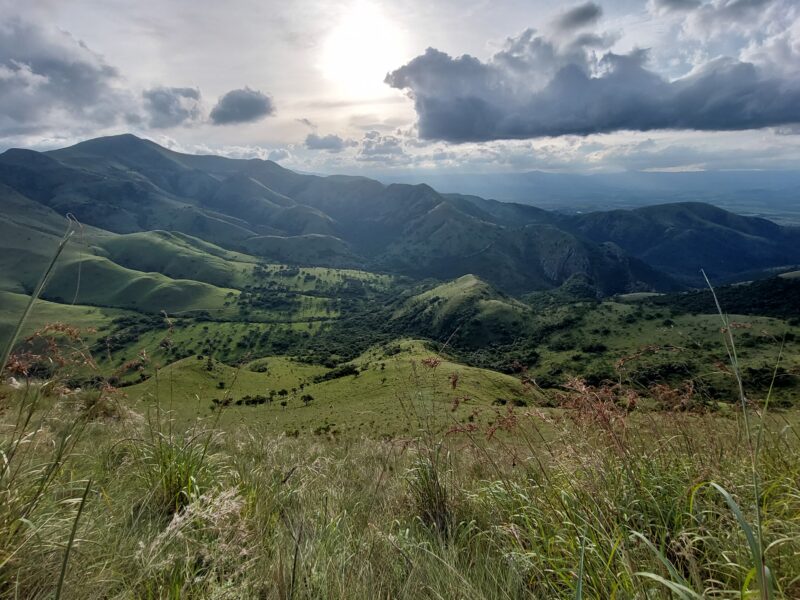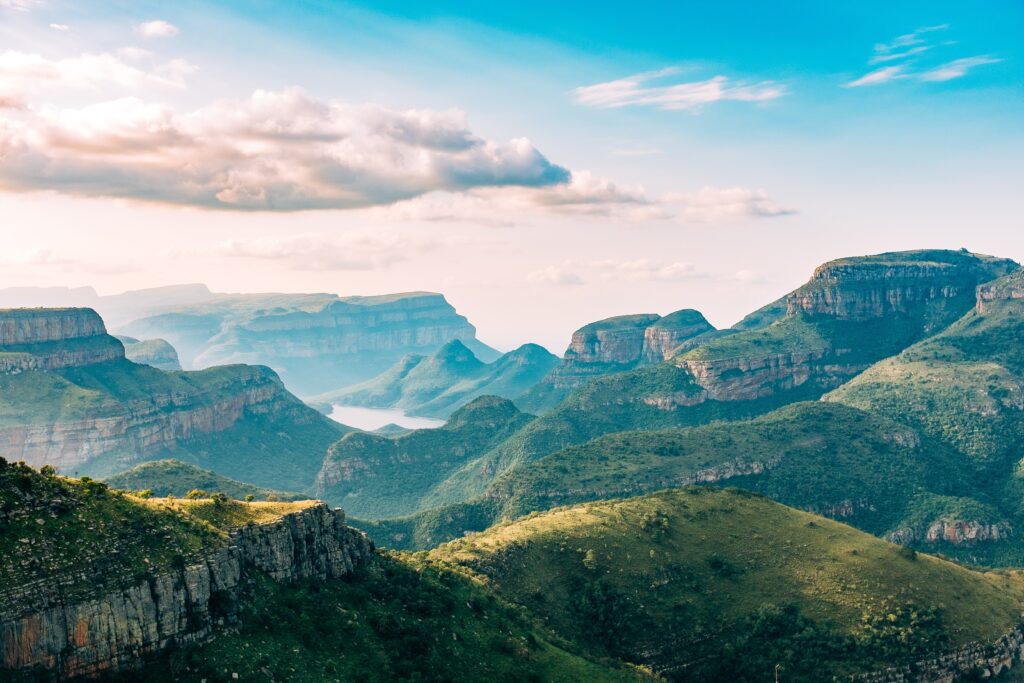
The iconic Blyde River Canyon forms part of the Escarpment. Photo: Ashim d’Silva
The Limpopo-Mpumalanga-Eswatini Escarpment (LMEE) in South Africa and Eswatini is a highland area mostly known for its beautiful vistas, waterfalls, cultural heritage and hiking trails. It stretches from the Pongola River in the south to Woodbush in the Limpopo province, and includes the Barberton Mountainlands lying perpendicular to the main Escarpment. Geologically it is extremely diverse and with a temperate to sub-tropical climate and summer rainfall.
Conservation of mountains is key to successful biodiversity conservation.
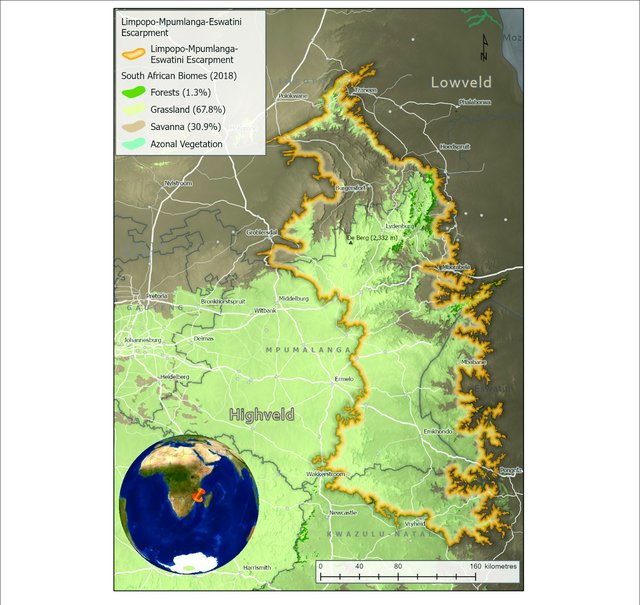
Map of the Limpopo-Mpumalanga-Eswatini Escarpment
This mountainous area is also blessed with an extraordinary variety of plants and has been relatively well botanized over a period of 150 years. It has proven to be home to a wealth of endemic and “near endemic” species. Endemic species are plant species confined to a particularly defined area based on current records of distribution while “near endemic” species refer to plants whose ranges are closely aligned with the same defined area as endemic species but not strictly confined to that area.
Although various components of the LMEE have been recognized for their endemic diversity and richness, like the Barberton Centre of Plant Endemism, no one was sure how many plants species occur in the LMEE all together or how the species richness compares with other mountainous regions in southern Africa. A handful of scientists set to find out and adequately capture the information. The results are impressive. The LMEE has more than double the endemics that the Drakensberg Montane Centre (DMC) has, making it the highest endemic richness of any summer rainfall mountain system in southern Africa for which the scientists have data. The current number of known species in the LMEE is at least 4657 of which 46 species are new to science and need to be described, and 496 are endemic.
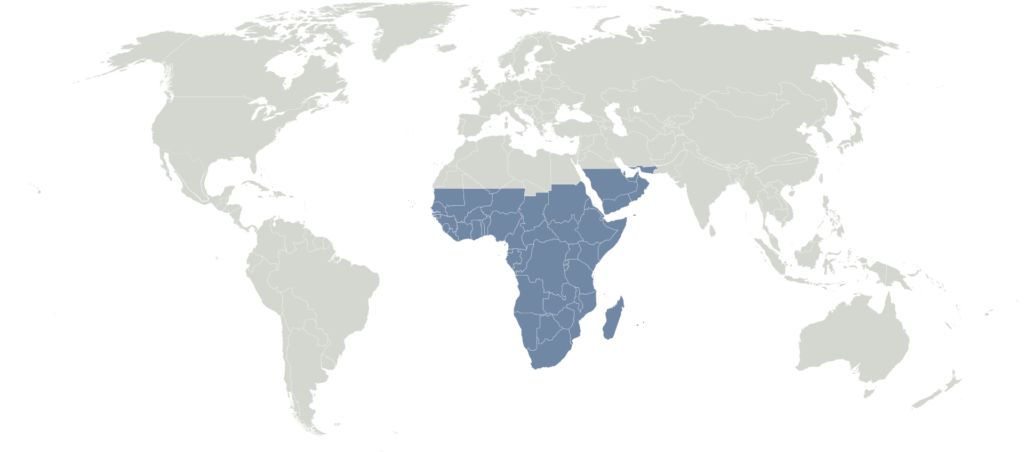
Map indicating the Afrotropical region.(By carol – Ecozones and Image:BlankMap-World6, compact.svg by User:Lokal_Profil, CC BY-SA 3.0, https://commons.wikimedia.org/w/index.php?curid=3698068)
To put it in perspective: an estimated 56,451 vascular plant species are known for the Afrotropical region (Africa south of the Sahara, southwestern tip of Arabia and Madagascar). Sub-Sahara Africa is 12 463 762 sq km, the Arabian Peninsula 3 237 500 sq km and Madagascar 587 041 sq km, making a total of 16 288 303 sq km. The LMEE at 53 594 sq km is 0.33% of the area and the 496 endemics is 0.88% of the flora restricted to this area. The LMEE flora of 4,657 species contributes 8.25% of the Afrotropical flora and 23% of the South African flora.
The 496 endemics comprises 10.7% of the provisional LMEE flora and may be the richest concentration of montane endemics in southern Africa outside of the Core Greater Cape Floristic Region.
According to the scientists the assumption has long been that nowhere else in South Africa is as exceptional floristically as the Cape with its Fynbos. The Core Greater Cape Floristic Region, which is a winter rainfall area, is home to over 9000 species that occur on mountains and plains between mountains of which nearly 70 percent is endemic. However, data to compare mountain flora with mountain flora for the Cape regions outside of the core was not available for more complex analysis. Therefore, with the available data this makes the LMEE the richest area with montane endemics in southern Africa outside of the Core Greater Cape Floristic Region.
The LMEE Grassland biome hosts the largest number of endemics (74.2 %), the Savanna biome (26,6%) followed by Forest biome (7.7%). It is worth noting that some of the largest patches of evergreen forests in South Africa outside of the southern Cape occur in the LMEE.
Overall 191 endemics are at risk and in need of protection in the LMEE and most are in the Grasslands (68.4%). One species is already extinct and two are extinct in the wild. This can be attributed to the transformation of almost 20 percent of Grasslands to afforested areas pre 1990 and ongoing degradation of primary Grassland.
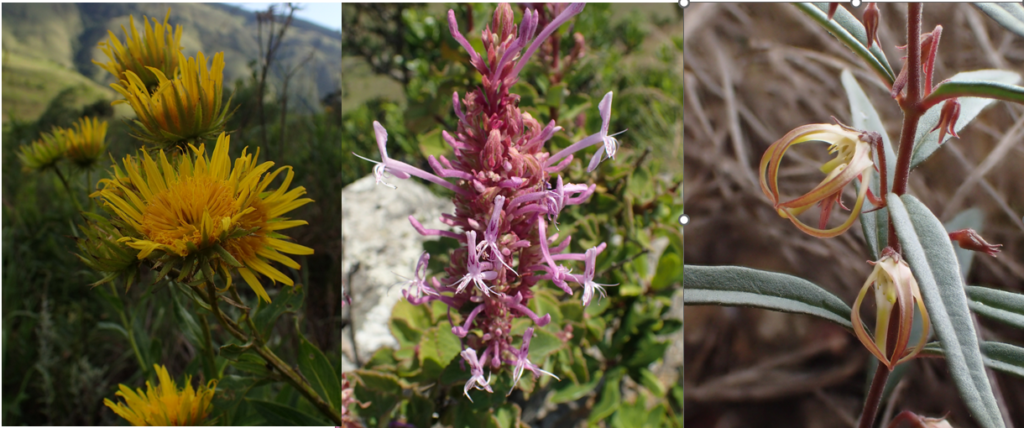
Asteraceae is the family with the most endemic species (57) followed by Lamiaceae (46) and Apocynaceae (42). Barberton endemics in these families are from left: Berkhey coddii (Asteraceae), Thorncroftia lotterii (Lamiaceae) and Brachystelma dyerii (Apocynaceae),
The most challenging conservation concerns in the LMEE are landscape transformation – especially conversion from mesic montane grassland to commercial forestry that consists of plantations with alien timber; the rampant spread of alien invasive species; poaching of wild plant populations for horticulture and traditional uses; mining; and bush encroachment by indigenous woody species.
As only 11.1% of the LMEE is formally conserved, the exceptional richness of the endemic flora combined with the major conservation threats suggest that the LMEE should become a major focus of conservation effort between South Africa and Eswatini as a matter of urgency. As climate change may increase the risk of extinction for LMEE endemics, the scientists also suggest that the remaining Grassland biome become the primary focus of protection and conservation stewardship efforts.
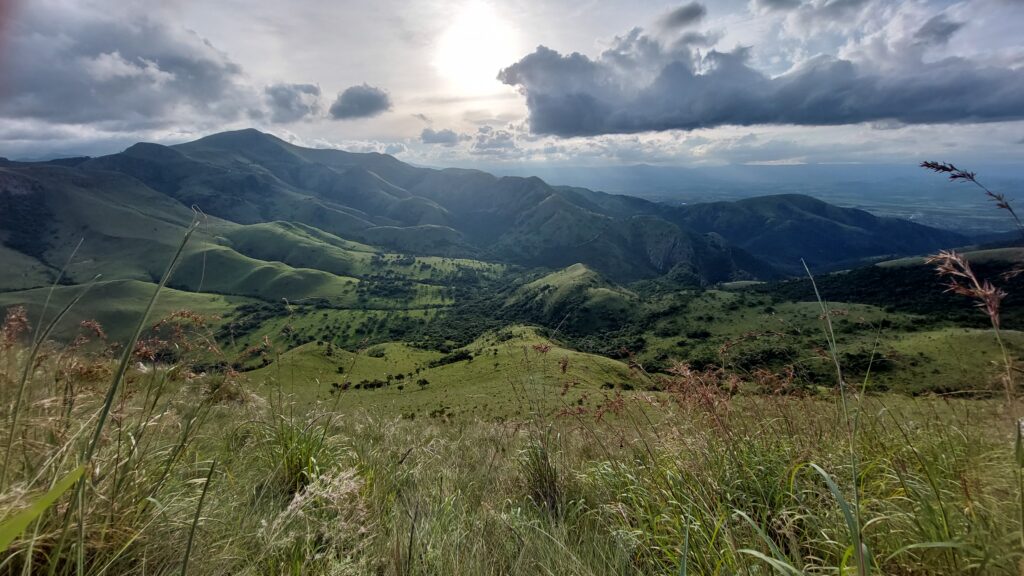
The Barberton Montane Grassland is classified as Vulnerable with close to 30 % of this biome protected within nature reserves such as Mountainlands and Songimvelo Game Reserve.
Equally significant is that Grasslands are under-appreciated by the public and do not capture the imagination to the same extent as Forests do.
This may be as humans tend to value that which they perceive to be rare and undervalue that which they perceive to be common. As a result, open habitats in the LMEE are the least protected and the most transformed, resulting in a significant proportion of endemics being at risk of extinction. But humans have the critical ability to protect these areas and its rich floral diversity. The future of these areas depends on our commitment to preserve them.
Citation: Clark VR, Burrows JE, Turpin BC, Balkwill K, Lötter M and Siebert SJ (2022) The Limpopo–Mpumalanga–Eswatini Escarpment—Extra-Ordinary Endemic Plant Richness and Extinction Risk in a Summer Rainfall Montane Region of Southern Africa. Front. Ecol. Evol. 10:765854. doi: 10.3389/fevo.2022.765854

